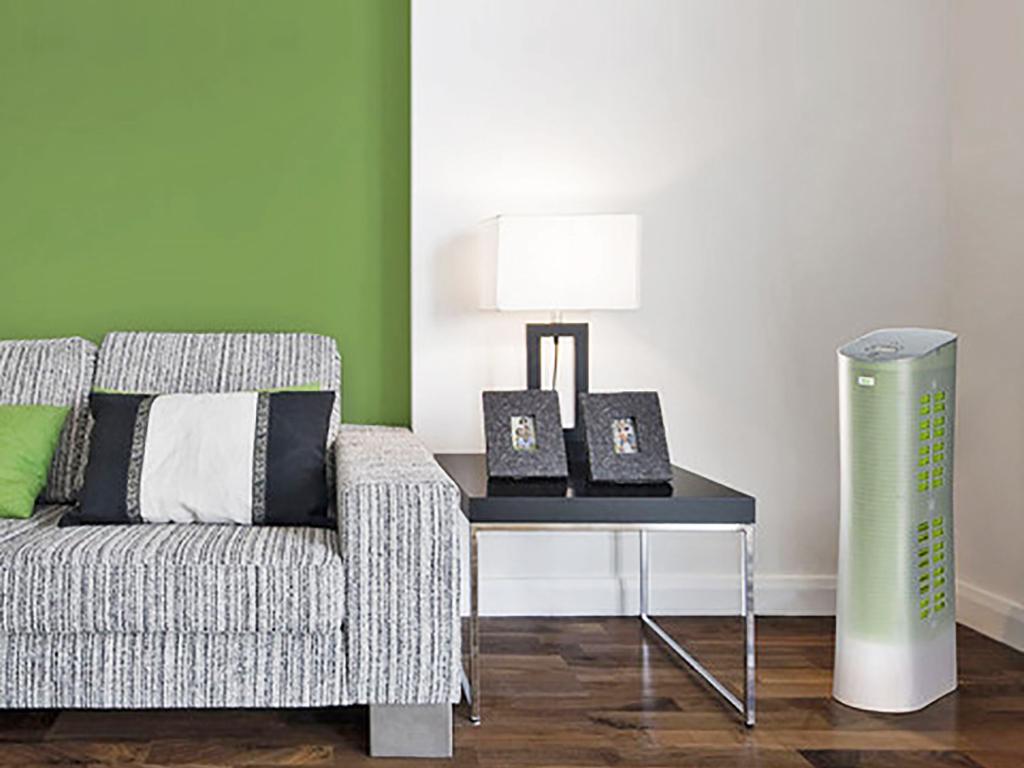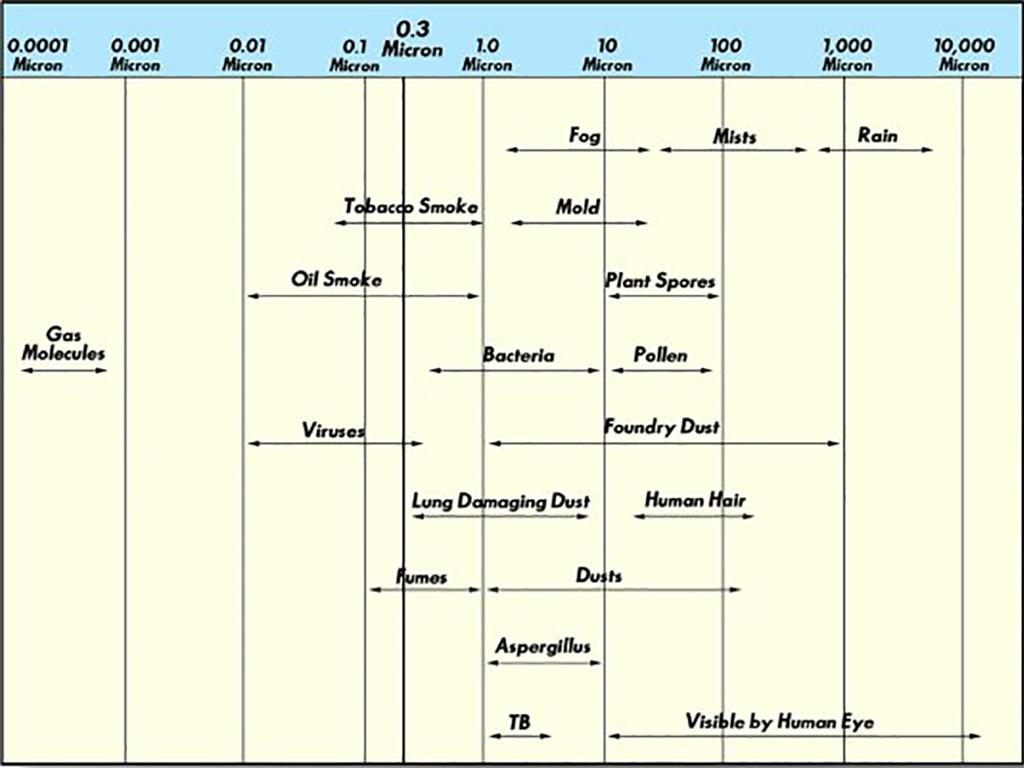5 Mins Read
We all have heard about and seen air purifiers but what do they really do? Are they worth the investment? And what is the difference between all of them? Green Queen is here to help explain what are actually very sophisticated pieces of technology, and why investing in one can vastly improve the quality of your home environment.
Why is an air purifier important?
In Hong Kong where the air can be polluted, hot and humid, many of us spend a lot of time indoors. We normally think of the air in our homes as safe, but did you know that the air in your home could actually be making you sick? In fact Sick Building Syndrome (SBS) is a disease caused simply by spending time inside. Modern homes are often full of air pollutants that can be hazardous to our health and while some come from known enemies such as mold and dust mites, they can also originate from items that you may not be thinking about such as formaldehyde from adhesives used in our furniture, toxins in our cleaning products, and volatile organic compounds (VOCs) from the paint on our walls.
In addition to the high levels of pollution outside that also makes its way into our homes, in humid Hong Kong we are also especially susceptible to anything that grows including mold, mildew and insects that can easily multiple in our homes. This is why we need air purifiers, to remove all of these tiny particles in the air around us including pollen, dust, VOCs, mold, pet hair and dander, bacteria, and viruses. This is especially important for those with allergies or who suffer from asthma. In addition, very small particles (those less than 10-micrometers) can actually be breathed into our lungs causing all kinds of potential health problems down the road.
What do air purifiers remove from the air?
We tend to think of “air” as empty, when in fact the space around us is teeming with small particles and gases. Some of the most common causes of indoor air pollution are pollen, dust mites, textile and carpet fibers, cockroach debris, mold, dust mite debris, dander, lead dust, auto emission, bacteria, cooking oil, smoke, viruses and VOCs. The easiest way to group these is by particle size. Fortunately, most of these are bigger than the 0.3 micrometer cut-off for HEPA filters. What particles are smaller than 0.3 micrometers? Viruses, carbon dust, smoke and VOCs for a start. While viruses and smoke are nanoparticles, VOCs behave as gases, which means they require a different type of filter to remove them from the air.
How should you compare air purifiers?
One of the most important things to look at when comparing air purifiers is the CFM, Cubic Feet per Minute or CMH, Cubic Meters per Hour. This is how much air passes through the device in a given period of time. You want to ensure that the total volume of air in your space can pass through the purifier in a maximum of one hour, this is one Air Changes per Hour (1 ACH). The recommendation for allergy and asthma sufferers is actually four times an hour (4 ACH)- honestly 2 ACH is good enough for the average household. Whilst doing our research for this article, we noticed that manufacturers tend to display the data in varying ways: some use cubic feet per minute, other go with cubic meters per hour and some only list the room size recommendation. If you can compare based on actual air output in CFM/CMH, you can ensure you are comparing apples-to-apples, as you can find completely different estimates for the same device on different sites! Most of the filters on the market are HEPA based meaning their filtration systems will catch the vast majority of particles, as such that the key product differentiation is how fast and how quietly they can process a volume of air. Looking for an additional layer of activated carbon or some additional material to absorb VOCs is also a product differentiator. If you pay attention to these details you should be able to choose the ideal air purifier for you and your family’s breathing needs.
What are the common types of air purifier filters?
There are many different filters and purification techniques on the market. Below we explain the most common types and how they work:
Ionizer purifiers work by using ions which attach themselves to the particles in the air, and once attached, allow the particles to be collected easily, just like how magnets work. The only negative is that depending on the model, these could produce a small amount of ozone gas (O3)- meaning it is technically polluting the air and potentially damaging your respiratory tissues.
Filter-based purifiers are relatively self-explanatory. The issue with filter-based systems is that only particles of a certain size will be removed and VOCs and other gases will probably remain in the air. The most popular filter-based purfiiers are HEPA filters, aka high-efficiency particulate arrestance. These filters must remove 99.97% of particles as small as 0.3-micrometers from the air as per US government regulations. For reference, an average bacterium is over 0.5-micrometers in diameter which is why HEPA filters are used to help prevent the spread of diseases. Fun fact: the HEPA filter was developed during World War II by the United States Atomic Energy Commission to filter out radioactive particles from nuclear testing facilities. Many purifiers have a series of filters to allow the HEPA filter to function for longer. Filter-based purifiers can also be broken down into HVAC-based or installed purifiers and free standing units. Systems that are installed may or may not use a HEPA filter, as they drastically slow down the flow of air (and so are not as practical for air-duct filtration systems).
Ultraviolet light can be used for ultraviolet germicidal irradiation (UVGI) which is an efficient and effective method to sterilize air, and further kill viruses and bacteria. This is frequently used for medical-grade filters as viruses can be as small as 0.08-micrometers and pass through many filters.
Activated carbon has been used for centuries as a filter because its molecular structure makes it great at absorbing VOCs, just like a sponge. VOCs are incredibly small, gaseous molecules, and as such they are another thing that a HEPA filter may have difficulty filtering from the air. Activated carbon is also used heavily in water filtration systems- your water filter probably has one, as do fish tanks.
Want to know where to find air purifiers in Hong Kong? We review the 5 best air purifiers on the market.
Photo credit: Mirage Alive Red Oak Urbana [Dining] via photopin (license), Abatement Technologies.






